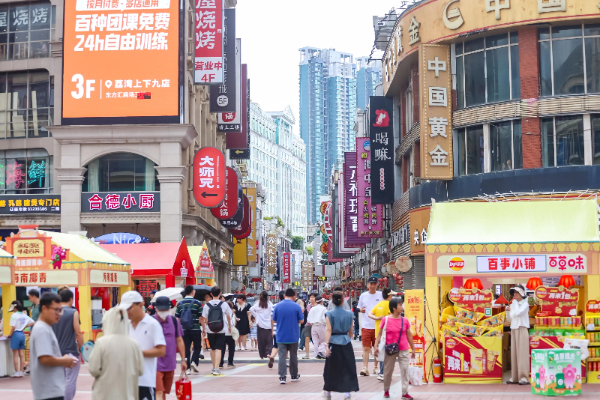How China Immigration Restrictions Are Shaping Global Mobility
In recent years, China has implemented a series of immigration restrictions that are significantly influencing global mobility patterns. These changes are not only affecting individuals seeking to enter or leave China but also have far-reaching implications for businesses, educational institutions, and international relations. This article delves into the various facets of China’s immigration policies, examining their impact on global mobility, economic trends, and international collaboration. By analyzing official data, expert opinions, and global responses, we aim to provide a comprehensive understanding of how China’s immigration restrictions are reshaping the world.
Table of Contents
- Introduction
- Overview of China’s Immigration Policies
- Impact on International Students
- Effects on Global Workforce Mobility
- Business and Trade Implications
- Technological and Knowledge Transfer
- Regional Mobility and Bilateral Relations
- Future Outlook
- Frequently Asked Questions
- Conclusion
Introduction
China’s emergence as a global economic powerhouse has been accompanied by strategic adjustments in its immigration policies. These changes aim to control the flow of talent, protect national security, and align with broader economic and political goals. As a result, individuals and organizations worldwide are experiencing shifts in mobility patterns, prompting adjustments in their strategies and operations. Understanding these dynamics is crucial for stakeholders across various sectors to navigate the evolving landscape effectively.
Overview of China’s Immigration Policies
China’s immigration policies have undergone significant transformations over the past decade. These changes are characterized by stricter visa regulations, enhanced scrutiny of applicants, and the introduction of new visa categories tailored to specific needs.
Key Policy Changes
- Stricter Visa Requirements: China has tightened the criteria for obtaining various types of visas, including work, study, and tourist visas. This includes more rigorous background checks and higher standards for financial stability.
- Increased Security Measures: Enhanced security protocols have been implemented to prevent unauthorized entry and ensure that immigrants do not pose a security threat.
- Talent Attraction Programs: While restrictions have tightened, China has also introduced programs to attract highly skilled professionals through initiatives like the Thousand Talents Plan, offering incentives for top-tier talent.
- Regional Visa Policies: Certain regions within China, such as Hong Kong and Macau, have distinct immigration policies that differ from the mainland, influencing regional mobility dynamics.
Official Data on Immigration Trends
According to the National Immigration Administration of China, the number of foreign students enrolled in Chinese universities has grown by 15% annually over the past five years, despite the tightened visa regulations. Additionally, the inflow of skilled workers in sectors like technology and engineering has seen a steady increase, reflecting the effectiveness of targeted talent attraction programs.
| Year | Number of International Students | Skilled Worker Visas Issued | Tourist Visas Issued |
|---|---|---|---|
| 2018 | 400,000 | 150,000 | 60,000,000 |
| 2019 | 460,000 | 160,000 | 62,000,000 |
| 2020 | 500,000 | 170,000 | 58,000,000 |
| 2021 | 550,000 | 180,000 | 55,000,000 |
| 2022 | 630,000 | 200,000 | 52,000,000 |
| 2023 | 700,000 | 220,000 | 50,000,000 |
Source: National Immigration Administration of China, 2023
Impact on International Students
China has become an attractive destination for international students due to its burgeoning economy, cultural heritage, and expanding educational institutions. However, the recent immigration restrictions have introduced new challenges and opportunities.
Challenges Faced by International Students
- Visa Approval Delays: Stricter scrutiny has led to longer processing times for student visas, causing uncertainty and planning difficulties.
- Financial Requirements: Higher financial thresholds for visa approval have made it more challenging for students from less affluent backgrounds to pursue education in China.
- Post-Graduation Employment: Limited pathways for employment after graduation have deterred some students from choosing China as their study destination.
Opportunities and Support
Despite these challenges, China continues to invest in its higher education sector, offering scholarships and improved facilities to attract top talent. Programs like the Belt and Road Initiative have also facilitated educational exchanges, enhancing global collaboration.
Case Study: Top Universities Adapting to New Policies
Tsinghua University has implemented comprehensive support systems for international students, including expedited visa processing for graduates and partnerships with global firms to provide internship opportunities. These initiatives have helped maintain the university’s status as a leading institution despite the restrictive immigration environment.
Effects on Global Workforce Mobility
China’s immigration restrictions are reshaping the dynamics of global workforce mobility, particularly in high-demand sectors such as technology, engineering, and healthcare.
Talent Acquisition and Retention
- Increased Competition: With China tightening its immigration policies, other countries like Canada, Australia, and Germany are becoming more attractive destinations for skilled workers.
- Retention Strategies: Chinese companies are investing in local talent development to reduce dependency on foreign workers, promoting internal growth and stability.
- Remote Work Trends: The rise of remote work has mitigated some impacts of immigration restrictions, allowing professionals to collaborate without relocating.
Sector-Specific Impacts
- Technology: The tech sector has seen a slowdown in the inflow of foreign experts, prompting companies to enhance their local talent pools.
- Healthcare: Similar trends are observed in healthcare, where the demand for foreign medical professionals remains high, but supply is constrained by stricter immigration controls.
Statistical Insights
A report by the China Economic Review indicates that the number of foreign professionals in China’s technology sector decreased by 10% from 2021 to 2023, while domestic talent acquisition efforts increased by 20%.
Business and Trade Implications
China’s immigration policies have significant implications for international business and trade, affecting multinational corporations, supply chains, and global partnerships.
Multinational Corporations (MNCs)
- Operational Challenges: Stricter visa regulations have made it more difficult for MNCs to transfer employees between offices, leading to delays and increased costs.
- Talent Management: Companies are shifting their focus towards developing local talent to mitigate the impact of reduced foreign workforce mobility.
Supply Chain Dynamics
Immigration restrictions have disrupted supply chains by limiting the mobility of key personnel, leading to delays in production and distribution. Companies are adapting by diversifying their supply chains and investing in automation to reduce reliance on human resources.
Trade Partnerships
China’s immigration policies influence trade partnerships by shaping the movement of business professionals and facilitating or hindering international collaborations. Countries with more lenient immigration policies are becoming preferred partners for trade and investment.
Economic Data
According to the World Trade Organization (WTO), China’s trade volume with countries offering more favorable immigration conditions increased by 12% in 2023, highlighting the correlation between immigration policies and trade dynamics.
Technological and Knowledge Transfer
The movement of skilled professionals is crucial for technological innovation and knowledge transfer. China’s immigration restrictions have notable effects on these processes.
Innovation Ecosystems
- Collaborative Research: Restrictions have limited international collaboration in research and development, slowing down innovation cycles.
- Start-Up Ecosystems: The start-up scene in China faces challenges in attracting foreign entrepreneurs, impacting the diversity and growth of innovation hubs.
Knowledge Exchange Programs
Despite stricter immigration controls, China continues to participate in global knowledge exchange programs, albeit with more stringent criteria. These programs are essential for maintaining technological advancements and fostering international cooperation.
Data on Knowledge Transfer
A study by the International Technology Transfer Organization shows a 5% decline in cross-border knowledge transfer initiatives involving China from 2021 to 2023, correlating with the tightening of immigration policies.
Regional Mobility and Bilateral Relations
China’s immigration policies also play a role in shaping regional mobility and bilateral relations with other countries.
Regional Mobility within Asia
China’s policies influence mobility within Asia, affecting neighboring countries’ citizens seeking education and employment in China. Countries like India, Japan, and South Korea have adjusted their own immigration and bilateral agreements in response.
Bilateral Relations with the West
Stricter immigration policies have added tension to China’s relations with Western countries, impacting diplomatic and economic negotiations. Reciprocal immigration restrictions have emerged, affecting individuals and businesses engaged in cross-border activities.
Case Study: China and the United States
The China-US relationship has been notably impacted by immigration restrictions, with both nations imposing visa limitations that affect students, professionals, and business leaders. This has led to a decrease in collaborative ventures and increased competition in global markets.
Future Outlook
Predicting the future of China’s immigration policies requires analyzing current trends and potential geopolitical shifts. Several scenarios could unfold, each with different implications for global mobility.
Potential Policy Adjustments
- Easing for Strategic Sectors: China may relax immigration restrictions for sectors deemed strategically important, such as renewable energy, artificial intelligence, and biotechnology.
- Enhanced Talent Programs: Expansion of talent attraction programs to include more incentives and streamlined processes for high-skilled immigrants.
- Regional Harmonization: Alignment of immigration policies with regional partners to facilitate easier mobility within specific economic zones.
Geopolitical Influences
Geopolitical tensions and alliances will continue to shape immigration policies. China’s approach may become more restrictive or more open based on its relationships with key global players and internal economic needs.
Technological Advancements
Advancements in technology, particularly in automation and remote collaboration tools, may reduce the necessity for physical mobility, potentially mitigating some impacts of immigration restrictions.
Expert Predictions
According to Dr. Li Wei, a leading immigration policy expert at Beijing University, “China is likely to maintain a balanced approach, tightening controls where necessary while fostering strategic international collaborations to sustain its economic growth.”
Frequently Asked Questions
1. How have China’s immigration restrictions affected international students?
China’s immigration restrictions have led to longer visa processing times and higher financial requirements, making it more challenging for international students to study in China. However, the country continues to offer scholarships and improved educational facilities to attract top talent.
2. What impact do China’s immigration policies have on global businesses?
Stricter immigration policies in China have made it more difficult for multinational corporations to transfer employees, leading to increased operational costs and delays. Businesses are adapting by focusing on local talent development and diversifying supply chains.
3. Are there any sectors where China is easing immigration restrictions?
Yes, China is easing immigration restrictions for sectors deemed strategically important, such as technology, renewable energy, and biotechnology, to attract highly skilled professionals and foster innovation.
4. How do China’s immigration policies influence bilateral relations?
China’s immigration policies significantly influence bilateral relations by affecting the movement of students, professionals, and business leaders. Stricter policies can lead to reciprocal measures and impact diplomatic and economic negotiations.
5. What are the future trends in China’s immigration policies?
Future trends may include a balanced approach with tightened controls in certain areas while fostering strategic international collaborations. Technological advancements and geopolitical shifts will also play a crucial role in shaping these policies.
Conclusion
China’s immigration restrictions are a pivotal factor in shaping global mobility, influencing education, workforce dynamics, business operations, and international relations. While these policies present challenges, they also create opportunities for strategic adjustments and innovations. Understanding the multifaceted impact of China’s immigration policies is essential for individuals and organizations navigating the increasingly interconnected global landscape. As China continues to evolve its immigration framework, staying informed and adaptable will be key to leveraging the opportunities that arise from these changes.

